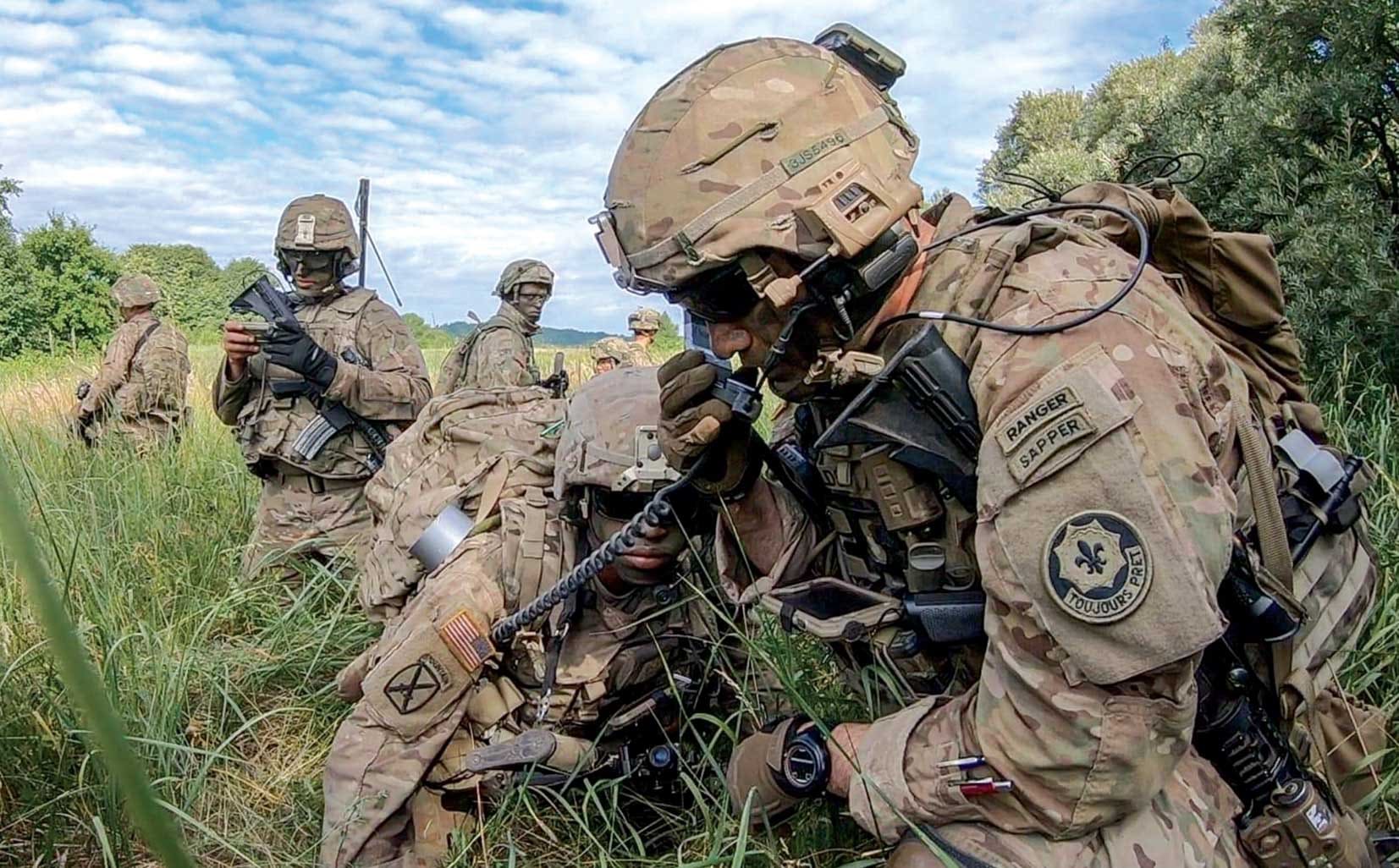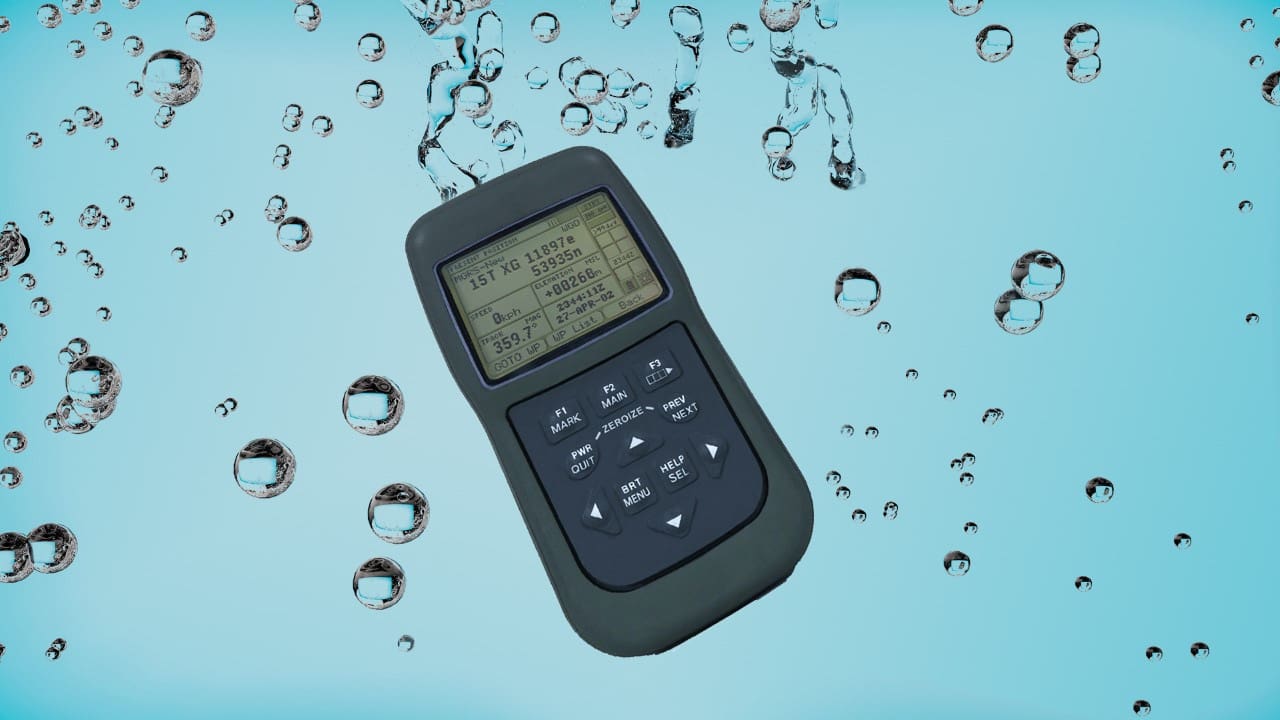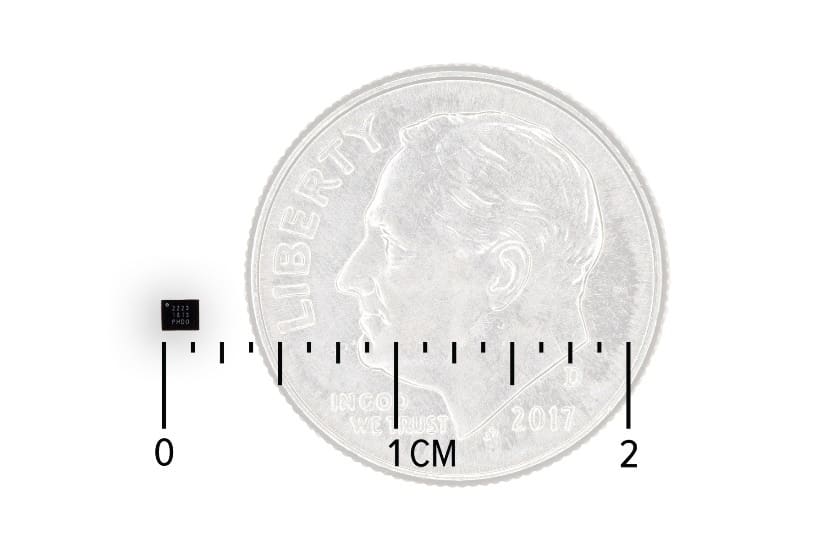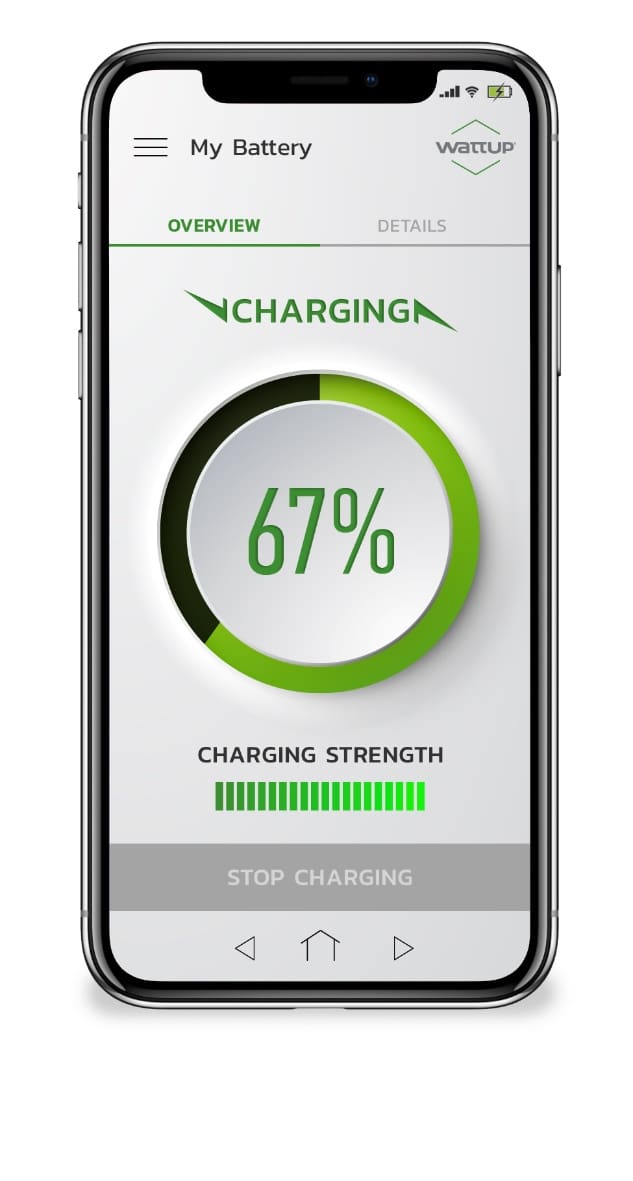
Photo: U.S. Army. Use of this image is for informational purposes only – the appearance of U.S. Department of Defense (DoD) visual information does not imply or constitute DoD endorsement.
As military forces become more technologically enabled, optimizing the size, weight and power requirements (SWAPO) for tactical electronic devices continues to provide opportunities for improvement. WattUp wireless charging is one innovative technology that program offices could implement to enhance battery and device designs.
 WattUp is an embedded charging technology which eliminates the dependence on charging cables, open ports or battery doors that reduce the physical integrity and ruggedness of a device. This delivers the dual benefit of reducing the complexity of product design – which can lower both manufacturing and build of materials (BOM) costs – as well as increase a device’s durability and dependability.
WattUp is an embedded charging technology which eliminates the dependence on charging cables, open ports or battery doors that reduce the physical integrity and ruggedness of a device. This delivers the dual benefit of reducing the complexity of product design – which can lower both manufacturing and build of materials (BOM) costs – as well as increase a device’s durability and dependability.
WattUp uses radio frequency (RF) technology to establish a link between a transmitter and a receiver, sending power via antennas. It does not use magnetic coils, which require precise alignment or physical contact with the device for charging to take place. This new technology enables both at-contact and over-the-air wireless charging. WattUp also offers improvements in the orientation, placement and interference issues that can occur with coil-based charging. Support for different sized and shaped devices, along with foreign object detection and enhanced thermal performance round out the benefits of WattUp wireless charging from Energous.
WattUp® Mid Field and Far Field Transmitters sense and communicate to authorized receiver devices via Bluetooth Low Energy (BLE), but do not interfere with Bluetooth or Wi-Fi, as a different frequency band is used for the transmission of power. WattUp is also software-controlled, intelligently determining which devices receive power, when and in what priority. A WattUp transmitter can also charge several devices simultaneously, contributing to a complete wireless power ecosystem with interoperability across multiple receivers and transmitters. If there are no WattUp-enabled devices within range, the WattUp transmitter becomes idle so no power is wasted.
 The WattUp receiver ASIC is a microchip embedded within the circuit board of the device that converts the transmitter’s radio waves into DC power to charge the device’s battery. WattUp receiver technology can be scaled to fit a variety of different electronic devices, including very small systems as small as in-ear communications and hearing protection.
The WattUp receiver ASIC is a microchip embedded within the circuit board of the device that converts the transmitter’s radio waves into DC power to charge the device’s battery. WattUp receiver technology can be scaled to fit a variety of different electronic devices, including very small systems as small as in-ear communications and hearing protection.
The WattUp technology is FCC-approved for power to be transmitted at near field (0 – 5mm distance) and through the air at mid field ranges (up to 1m distance) – with distances of up to 5 meters being in the works.
 Finally, the WattUp ecosystem features secure, cloud-based, management software, which enables users to track and manage multiple WattUp-enabled devices within a single environment. Users can set priorities and other alerts to maintain oversight of the health and power consumption of their devices and batteries – and get advance notice when they need recharging.
Finally, the WattUp ecosystem features secure, cloud-based, management software, which enables users to track and manage multiple WattUp-enabled devices within a single environment. Users can set priorities and other alerts to maintain oversight of the health and power consumption of their devices and batteries – and get advance notice when they need recharging.
Military units need to have confidence in their equipment and the assurance that it will perform effectively when needed. Dead or defective batteries can be as unwelcome as non-serviceable weapon. With no need to manually check batteries or to physically connect devices to chargers, WattUp RF wireless charging technology gives leaders and soldiers the confidence that their batteries and devices will be charged and ready when needed.
To find out more about how WattUp® RF wireless charging technology can be applied to military applications, visit energous.com/military, or contact us at military@energous.com.


What charges the WattUp ? A solar-recharged 30kmAh iPhone charger is only 50 bucks… straps to a pack, constantly charging. No proprietary software required, keeps Murphy out from your mission…
If your missions only rely on an iPhone you’re not the customer for this.
LOL, yes you’re right. Still, I’m curious as to what charges the charger –
It could provide some convenience, but sending energy wirelessly means a much greater loss (by an order of magnitude) than when using wires, that’s something you’d typically learn in a physics class.
Leave alone the fact that anything transmitted can be also received by the third-party, so having this charger on would announce the user’s presence to anyone with an $5 receiver and make him perfectly trackable.
The WattUp technology uses an encrypted BLE link ensuring that only authorized devices will receive power. There are also many unique safeguards and proprietary security features available to our partners depending on their application needs.
With that said, many of the applications for this technology are for charging in locations and environments where the concerns that have been raised here are not applicable.
While charging over-the-air, and even wirelessly through contact charging, is not as efficient as through a cable, it’s the ability to charge a completely sealed device (ie, water and dustproof) that sets this technology apart from charging cords/ports, or battery access door requirements – especially as it pertains to harsh environment applications that military forces require.
If that’s an answer to my comment, the two latter paragraphs are unrelated to the concerns mentioned above simply because no broad statement such as “it’s totally useless” or something along those lines has been made. Wireless charging does undeniably have some unique positive features.
But the first paragraph is simply technologically illiterate. The concern isn’t that a malicious third-party can initiate power transmission (and that’s what secure negotiation over the BLE ensures).
The concern is that the UHF power transmitter rated for several Watts can be detected and tracked with extremely low-tech equipment such as a directional mobile phone antenna and an $5 DVB-T receiver attached to a tablet (look up “RTL SDR”).
It’s not like it’s a manufacturer’s fault – that’s just the physics of the process. However, any user of this technology must understand that once it’s powered on, it’s equivalent to having a radio beacon on you. With older wireless chargers working in LF/MF spectrum it was a kind of a lesser concern.
Question is: How efficient is this? Magnetic Fields interacting with each other = Fields that uses no energy + Force that requires energy. The efficiency is quite high. But with a radial emitter like some antenna, even when both devices are touching, means you get maximum pi/2 as contact area, therefore maximum 50% efficience? So you waste alot of energy into thin air? What about health protection: Military 10W Radios are already factor 20 higher than health regulations for civilians allow – 500mW is considered harmful when exposed over longer periods of time. To charge some 10Wh Battery of a commercial smartphone, you may need 20Wh of RF power. To charge at 1C rate, you would emitt at 20W power, and that is way too much! Overall: Tesla knew this stuff 100 years ago already – yet, modern economie picked up that technology just recently for smartphones. I think Power over Air is something that should not be emitted 360°, worse in a sphere to all directions (North and South too). If you use Power over Air, use some directional energy transmitter, like Photons! Way safer technology in terms of biological mutations.